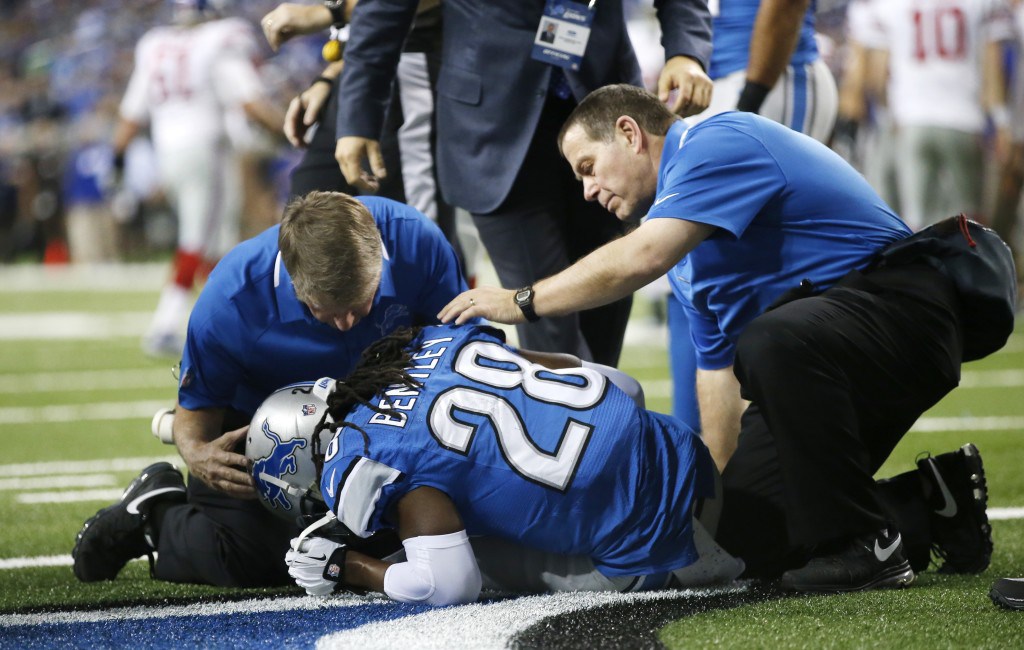
Cornerbacks sustain the most concussions of NFL players, almost a quarter of those reviewed from the 2015 and 2016 seasons.
That was one of the findings of the NFL’s review of concussions that occurred during games the previous two seasons, the details of which were released Thursday. Cornerbacks suffered 22% of the 325 concussions reviewed, followed by wide receivers (15%), and linebackers and offensive linemen (both 11%).
Kickers suffered the fewest concussions, at 1%.
Of the 459 concussions that occurred during games in 2015 and ’16, the NFL reviewed video of 383 of them and was able to determine the contact or play on which they occurred in 325. (The 76 concussions that were not reviewed had delayed onset of symptoms.)
The review was done as part of the NFL’s Engineering Roadmap, a $60 million program designed to provide more information on the biomechanics of head injuries. The NFL is making the information public in hopes it spurs development of products that could reduce head injuries or minimize their impact.
Here are three other key numbers in the review:
60%: Concussions sustained by players making hits, be it tackles or blocks.
The assumption is often that the player who gets hit is the one who ends up with a concussion. But the review found that 41% of concussions occurred in players making a tackle, with another 19% occurring in players blocking someone.
22% of the concussions occurred in players being tackled and 11% in players being blocked.
36%: Concussions sustained in helmet-to-helmet contact, a number that is decreasing.
“This helmet-to-helmet number would have been roughly double 15 to 20 years ago,” said Jeff Crandall, the director of the Center for Applied Biomechanics at the University of Virginia and the head of the NFL’s engineering committee.
“We can attribute at least fair number of this reduction to some of the rules changes that have been implemented in the recent past,” Crandall added.
50% and more: Concussions sustained on the side of the head, although there were different points of impact, severity of impact depending upon a player’s position. That could make it worthwhile to have different helmets for different positions, Crandall said.
By Nancy Armour
This article was republished with permission from the original author and 2015 Ronald Reagan Media Award recipient, Nancy Armour, and the original publisher, USA Today. Follow columnist Nancy Armour on Twitter @nrarmour.